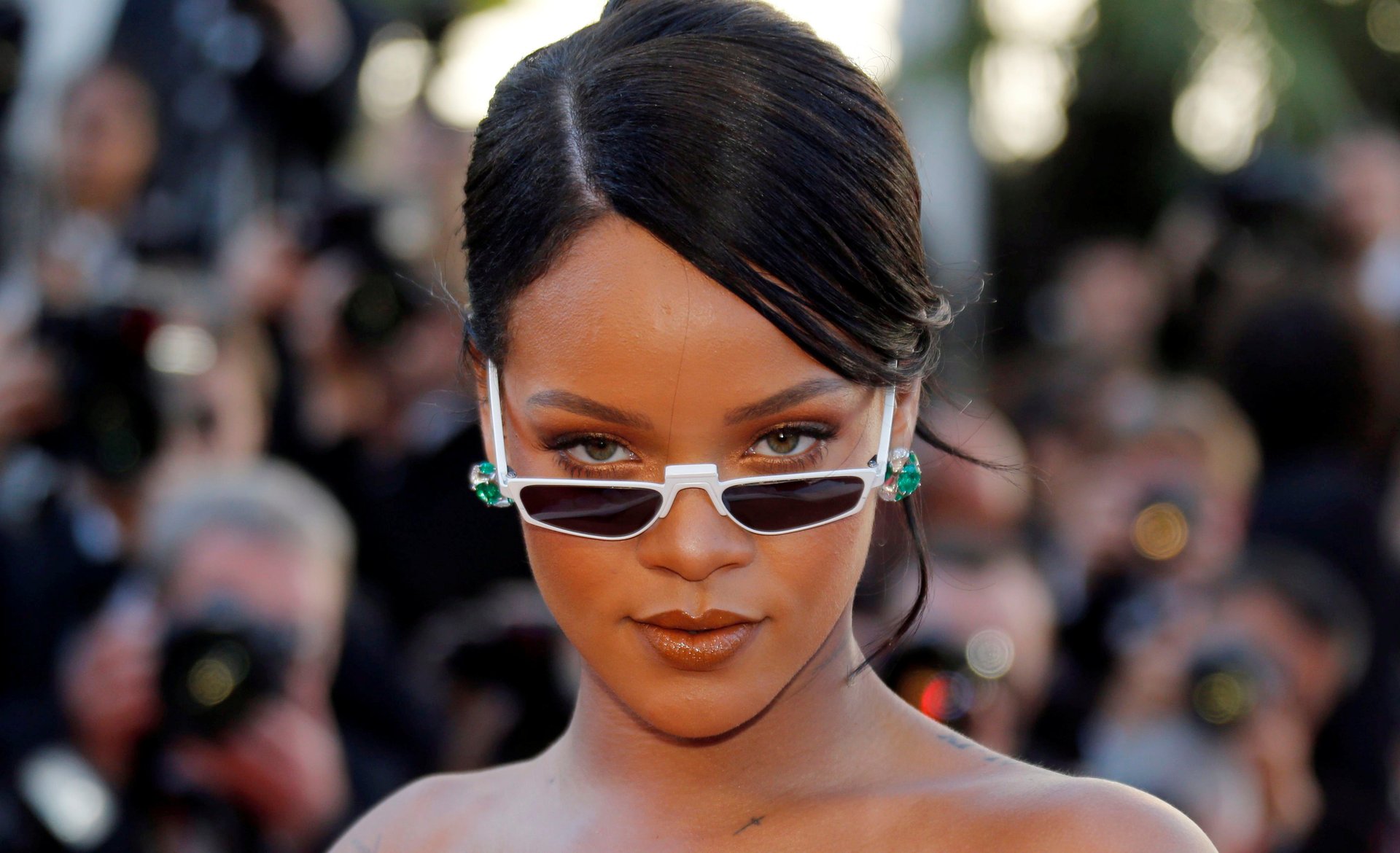How Rihanna forced the beauty industry to acknowledge a world beyond the rich and the white
On Thursday, June 14, Dior officially launched its new Backstage makeup line at a glitzy Manhattan release party. The collection, which is repped by Bella Hadid, is billed as a younger, trendier, and slightly cheaper, version of Dior’s classic line. Prior to its debut, the fashion house was lauded for its decision to be more price and skin tone inclusive by releasing 40 different shades of foundation; at $40 a bottle, it offered a rather generous $12 discount off of its main Dior line.


On Thursday, June 14, Dior officially launched its new Backstage makeup line at a glitzy Manhattan release party. The collection, which is repped by Bella Hadid, is billed as a younger, trendier, and slightly cheaper, version of Dior’s classic line. Prior to its debut, the fashion house was lauded for its decision to be more price and skin tone inclusive by releasing 40 different shades of foundation; at $40 a bottle, it offered a rather generous $12 discount off of its main Dior line.
But Backstage is not the first collection to feature such a wide variety of shades at a reasonable price point. Indeed, since Rihanna’s Fenty Beauty launched last September with 40 shades of its own foundation, industry mainstays like CoverGirl and Revlon, cult favorites like Smashbox and Tarte, along with social media stars like ColourPop, have extended their own lines to include 40 foundations or more.
The trend, which has evolved into more of an industry standard, seems to have kicked off in earnest after Fenty, and is being hailed by some outlets as the “Fenty Forty” or the “Fenty Effect.” And now that luxury legend Dior has come out as the first premium brand to offer a color inclusive makeup line, now is the time to check in with an industry that has consistently overlooked people of color.
Not all shades are created equal
There are several beauty brands that have offered 40, even 42, different shades of foundation for some time now, including drugstore staple Maybelline—along with Estée Lauder, and Make Up For Ever.
In fact, following Fenty’s launch, Make Up For Ever was quick to remind the industry that Rihanna’s 40-shade debut was “nothing new,” noting on Instagram that it had been selling 40 shades since 2015. Naturally, Rihanna clapped back with a glib: “lol. still ashy 🤷🏽♀️,” suggesting that the line still failed to support dark-skinned people despite its variety.
While the drama seems petty, data visuals site The Pudding revealed in a detailed report that Rihanna’s criticism was justified. In an ingenious test, the report’s authors pulled the hexadecimal color codes of all of the available shades of bestselling US foundation lines, extracted their lightness values using Photoshop, and plotted them to see whether the line catered toward certain skin tones.
In a loss for Make Up For Ever, the authors found that Fenty’s Pro Filt’r foundation did, in fact, support a greater range of skin tones than its competition—including Make Up For Ever and other best selling brands in the US. What’s more, Fenty excelled on both ends of the color spectrum. Not only did it perform well with the report’s darkest skin tone range, in an ironic twist only Fenty and black-owned label Beauty Bakerie covered extremely light skin and people with albinism.
Beauty for all
So it’s really no wonder that Fenty’s darker shades sold out practically upon their debut: by providing a richer dark-skin collection, Fenty captured an audience that has been consistently ignored by most of the industry. That said, it wasn’t just Fenty’s products or Rihanna’s celebrity that lead to its success. The brand’s marketing campaign also prominently featured people of color, a move that has now been adopted by mainstream brands as they hop on the 40 shade wagon.
CoverFX, for example, actually launched an inclusivity campaign on social media with the hashtag “#NudeIsNotBeige” a week after Fenty’s debut, and in May, when CoverGirl released its 40 shade Matte Made foundation line—its “most inclusive foundation ever!”—it did so with Issa Rae and Ayesha Curry as its Cover Girls. Then there’s Revlon’s new “Flesh” collection, which is literally branded as an “inclusivity-driven” beauty line, and Too Faced—another last minute addition to the party—whose founder, Jerrod Blandino, announced with an Instagram photo featuring black and brown models that he would be teaming up with black Youtube makeup artist Jackie Aina to “develop an even bigger shade range” of the foundations.
Discount Dior
In 2017, Fenty Beauty was named one of Time’s “Inventions of the Year” for its inclusivity, but it’s the impact of the brand’s release that is truly impressive. Since Fenty’s launch, lines that still do not offer a wide range of shades and price points are doing so at their peril. What’s more, the fact that a designer heritage brand like Dior is on board suggests that the beauty industry is entering a time of reckoning, a time where beauty brands—even iconic names like Dior—can no longer afford to be skin color- or cost-exclusive in their offerings.
But is Dior—and the rest of the industry for that matter—really celebrating diversity, or are they just pandering to people of color to compete in an increasingly competitive landscape? When you question the motivations of “inclusivity-driven” beauty lines it may feel like companies don’t care about black and brown people until they know they can make money off of them.
And perhaps that is the case. But does it ultimately matter? If products are becoming more inclusive, affordable, and people of color are represented in their marketing, maybe we can call this particular instance of corporate greed serendipitous. Or at least leveling the playing field.